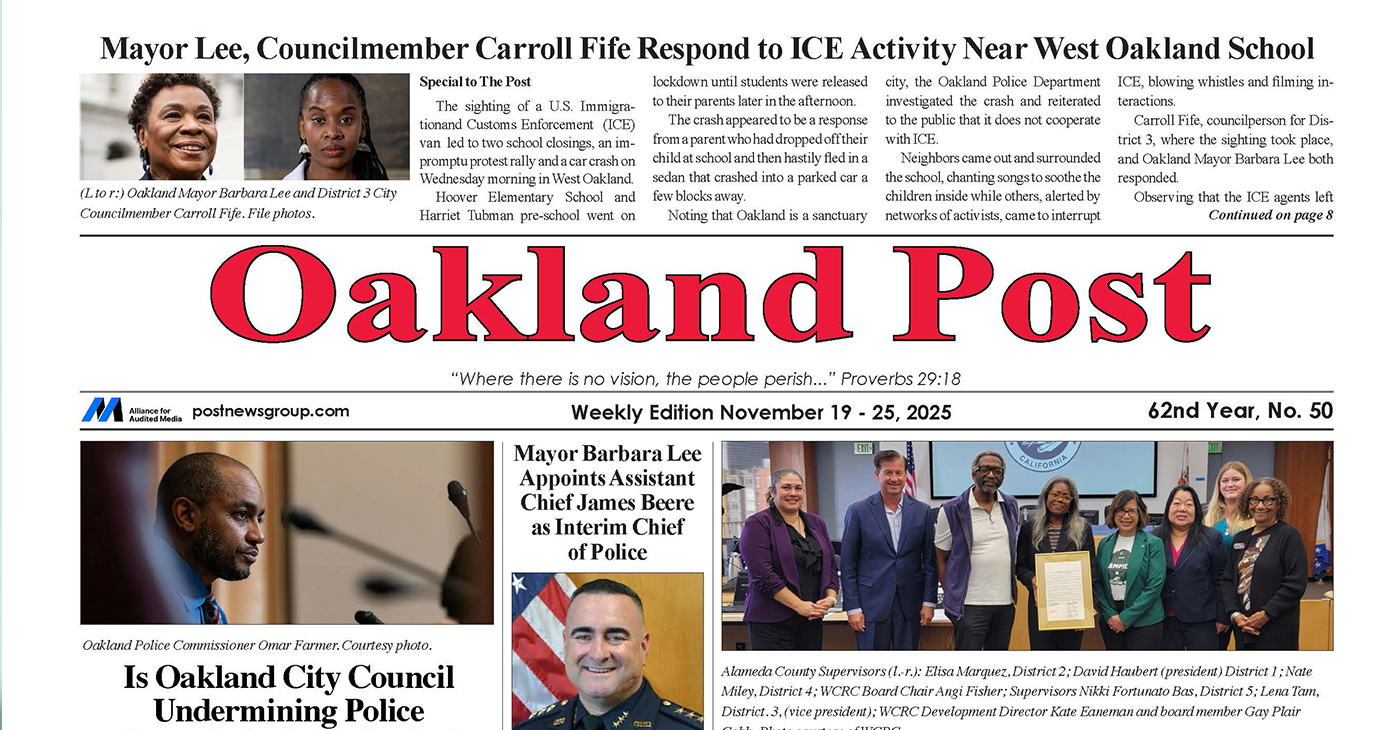Crime
New Report: 62 Percent of Those Stopped by OPD Are Black
The City of Oakland has released new police stop-and-search data showing that African Americans make up 62 percent of the people who were stopped by the Oakland Police Department during an eight-month period last year, though Black people make up only 28 percent of the city’s population.
African Americans make up 9,024 of the nearly 14,592 of police stops during the period from April through last November last year, more than three times the rate any other racial group.
Of those who are stopped, they are also the most likely to be arrested for a felony. Fourteen percent or 1,267 of the stops resulted in felony arrests.
Latinos were the second mostly likely to be stopped, comprising 17 percent or 1,711 of the stops, while they make up 25 percent of city’s population. Seven percent of those stops resulted in felony arrests.
Mayor Jean Quan and Interim Police Chief Sean Whent, speaking at a press briefing Monday, said they were pleased that the city has finally overcome many technical challenges and is producing accurate stop-and-search data.
However, they said, it is still too early to talk about trends or whether the numbers they have collected show that police are targeting African Americans. Analysis of the data will be part of future reports, which will be produced at least twice a year, they said.
The city has been under pressure for over a decade to produce reliable police stop-and-search data. The issue is one of the key remaining unmet requirements of federal Judge Thelton Henderson’s oversight of the police department, designed to ensure OPD operates in accord with the constitutional rights of local residents.
“We’re committed to engaging in constitutional policing,” according to Whent, who said the department is focusing on fighting crime in the most violent sections of the city.
“We want to focus on the people committing most of the crime whoever that may be regardless of race,” he said.
Activism
Oakland Post: Week of November 26 – December 2, 2025
The printed Weekly Edition of the Oakland Post: Week of November 26 – December 2, 2025

To enlarge your view of this issue, use the slider, magnifying glass icon or full page icon in the lower right corner of the browser window.
Activism
Oakland Post: Week of November 19 – 25, 2025
The printed Weekly Edition of the Oakland Post: Week of November 19 – 25, 2025

To enlarge your view of this issue, use the slider, magnifying glass icon or full page icon in the lower right corner of the browser window.
Activism
Oakland Post: Week of November 12 – 18, 2025
The printed Weekly Edition of the Oakland Post: Week of November 12 – 18, 2025

To enlarge your view of this issue, use the slider, magnifying glass icon or full page icon in the lower right corner of the browser window.
-

 Activism3 weeks ago
Activism3 weeks agoOakland Post: Week of November 12 – 18, 2025
-

 Activism4 weeks ago
Activism4 weeks agoOakland Post: Week of November 5 – 11, 2025
-

 Activism2 weeks ago
Activism2 weeks agoIN MEMORIAM: William ‘Bill’ Patterson, 94
-

 Activism3 weeks ago
Activism3 weeks agoHow Charles R. Drew University Navigated More Than $20 Million in Fed Cuts – Still Prioritizing Students and Community Health
-

 #NNPA BlackPress3 weeks ago
#NNPA BlackPress3 weeks agoThe Perfumed Hand of Hypocrisy: Trump Hosted Former Terror Suspect While America Condemns a Muslim Mayor
-

 Bay Area3 weeks ago
Bay Area3 weeks agoNo Justice in the Justice System
-

 #NNPA BlackPress3 weeks ago
#NNPA BlackPress3 weeks agoProtecting Pedophiles: The GOP’s Warped Crusade Against Its Own Lies
-

 #NNPA BlackPress2 weeks ago
#NNPA BlackPress2 weeks agoTrump’s Death Threat Rhetoric Sends Nation into Crisis
























































